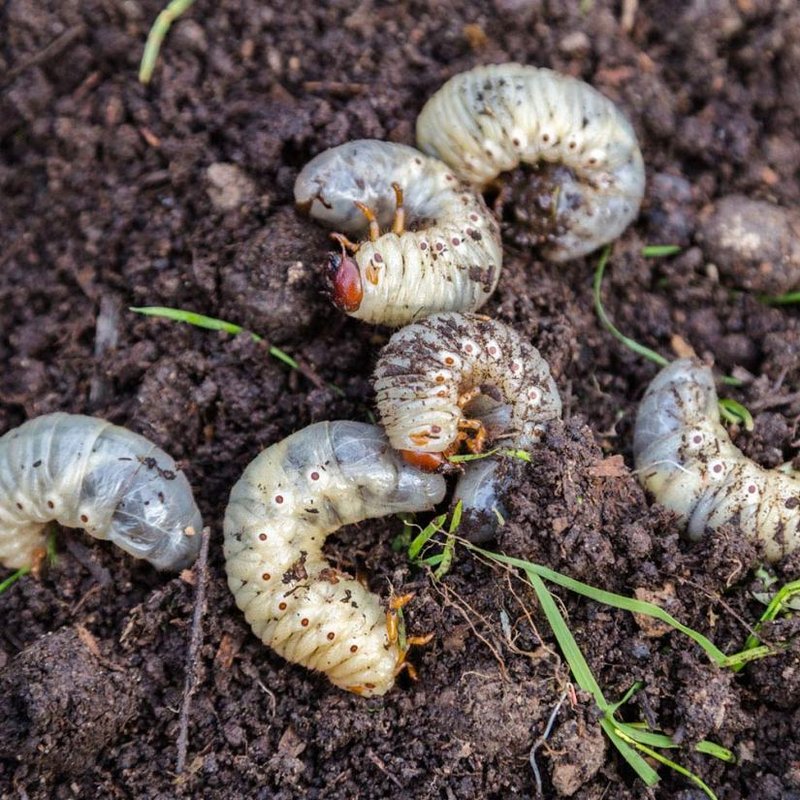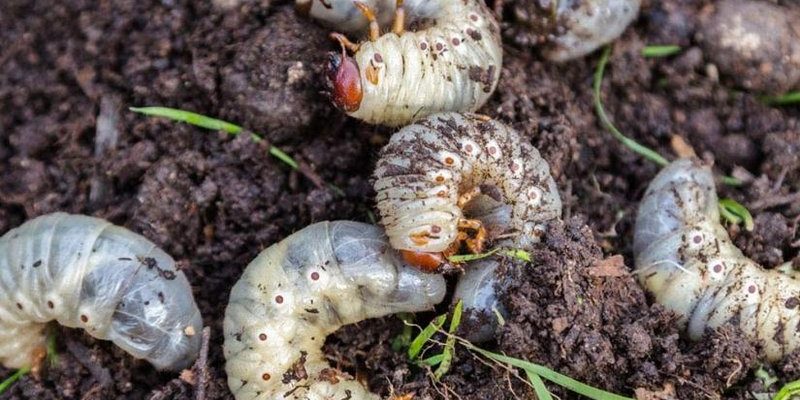
So, do grub worms truly come back every year? Let’s dive into the fascinating world of these garden invaders. Understanding their life cycle and habits can help you protect your lawn from their munching. Get comfy, and let’s chat about what you need to know!
What Are Grub Worms?
Before we tackle the question of whether grub worms return annually, it helps to know what they are. Grub worms are the larvae of beetles, such as Japanese beetles or June bugs. They typically have a C-shaped body, are white or cream in color, and can grow up to an inch long. Think of them as the toddler version of beetles—cute but capable of some serious destruction if left unchecked.
These little guys feed on grass roots, which is the main reason they can cause trouble in your lawn. If you’ve ever tried to grow a flower bed or maintain a lush green yard, you know how frustrating it can be to find patches of grass dying off. It’s like waking up to find your favorite plant wilting—definitely not something you want to see!
Life Cycle of Grub Worms
To understand whether grub worms come back each year, let’s look at their life cycle. Grub worms typically emerge from eggs laid by adult beetles in the late spring or early summer. Here’s a quick breakdown of their life stages:
- Eggs: Adult beetles lay eggs in moist, grassy areas.
- Larvae: The eggs hatch into grub worms, which begin to feed on grass roots.
- Pupae: After a few weeks, the grubs burrow into the soil and pupate.
- Adults: In the summer, adult beetles emerge, ready to lay eggs and restart the cycle.
Seeing it this way makes it clear that grub worms are part of a cyclical process. Each year, if conditions are favorable, they’ll come back. But how can you tell if they are actually coming back or if your lawn has just been unlucky?
Do Grub Worms Return Every Year?
The simple answer is yes, **grub worms can come back every year**—especially if they had a good season the previous year. If you’ve had an infestation once, odds are that they’ll return if the conditions are right. Think of it like a party you didn’t quite want to host again; if the conditions were perfect last time, your guests (the grubs) will likely show up again!
Environmental factors play a huge role in their return. Grub worms thrive in warm, moist conditions. So, if your area experiences mild winters and wet springs, it creates a perfect breeding ground. On the flip side, harsh winters or dry spells can help reduce their numbers. That’s like having a party in the summer; more people will come if the weather is nice!
Signs of Grub Worm Activity
If you’re worried about grub worms returning, it’s crucial to be on the lookout for signs of their activity. Here are some indicators that might show up in your yard:
- Patchy Grass: If certain sections of your lawn are brown and patchy, it might be a sign of grub infestation.
- Soft Spots: Areas of your lawn that seem squishy when you walk on them may indicate that the grass roots are being eaten.
- Increased Animal Activity: If you notice more birds or raccoons digging in your yard, they could be after the tasty grubs beneath the surface.
Identifying these signs early can help you tackle the problem before it escalates. It’s like spotting smoke before a fire—it gives you time to act.
How to Control Grub Worms
If you find that grub worms are making a return, don’t panic! Here are some steps you can take to manage them:
1. **Cultural Controls:** Keep your lawn healthy by watering correctly and mowing at the right height. A strong lawn can withstand some damage better than a stressed one.
2. **Beneficial Insects:** Certain insects, like nematodes, can help control grub populations. They act like nature’s little pest control agents, attacking the grubs without harming the grass.
3. **Chemical Treatments:** If the infestation is severe, you might consider insecticides. Just be sure to follow the instructions carefully and consider the effects on other wildlife.
Dealing with grub worms is like tackling a pest control puzzle. The more you know about their habits and lifecycles, the better equipped you’ll be to keep your lawn vibrant.
When to Take Action
Timing can be everything when it comes to grub worms. The ideal time to address them is in late summer to early fall when they’re actively feeding. Here’s a quick rundown:
- Late Summer: This is when young grubs are feeding and most vulnerable.
- Early Fall: Applying beneficial nematodes or insecticides during this time can be more effective.
- Spring: By now, adult beetles might be hatching, but tackling them early is key.
Knowing when to act can seriously help keep your lawn in tip-top shape. It’s similar to getting ahead on your spring cleaning; doing it at the right time makes all the difference!
So, do grub worms come back every year? Yes, they can, especially if the conditions are right for them. By understanding their life cycle, being alert to the signs of their presence, and taking action at the right time, you can keep your lawn healthy and beautiful. It’s like having a well-prepped plan for that unpredictable neighbor—stay on top of things, and you can keep the pests at bay.
With a little patience and the right strategies, you can enjoy a lush, green lawn free from grub worm trouble. Just remember, knowledge and prevention are your best friends in this battle!

